Faculty of Architecture and Environmental Design, Department of Department of Architectural and Environmental Design
The next generation
Produce
The shape.
Faculty of Architecture and Environmental Design, Department of Department of Architectural and Environmental Design
The next generation
Produce
The shape.










We foster students who can play an active role in the fields of things, architecture, environment, space, nature, and cities.
Specifically, you will first acquire the knowledge, logical thinking skills, and multifaceted creative ability required for design.
Next, students will use that knowledge to develop the specialist skills to discover unresolved architectural and environmental issues, find design methods that create new value, and put together concrete proposals.
Let's think together about designs that will enrich society.
01
Most areas related to design
You can learn.
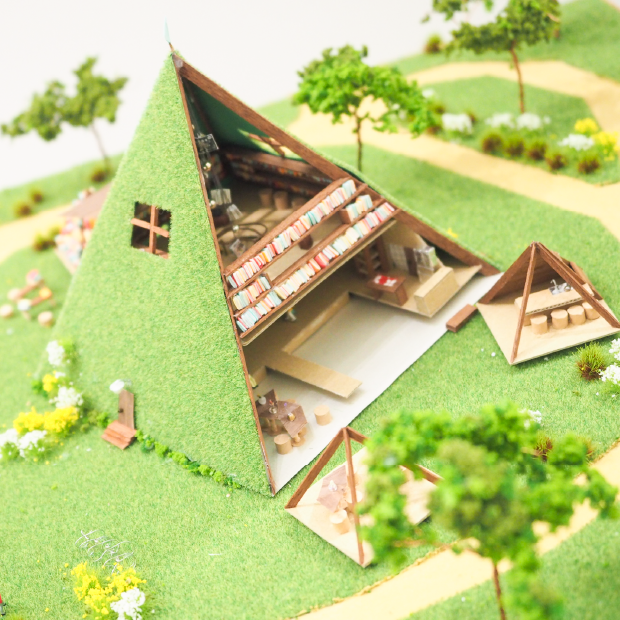
Design is always needed to improve functionality and comfort in places where people are. Six fields that were previously studied separately, including objects, architecture, environment, space, nature, and cities, have been combined into one faculty. While focusing on the course (specialty) selected in the second year, students can also learn about other courses. Design for people is only possible when it is not bound by frameworks and is expanded.
02
The ability to succeed in the field you are aiming for
Learn efficiently.
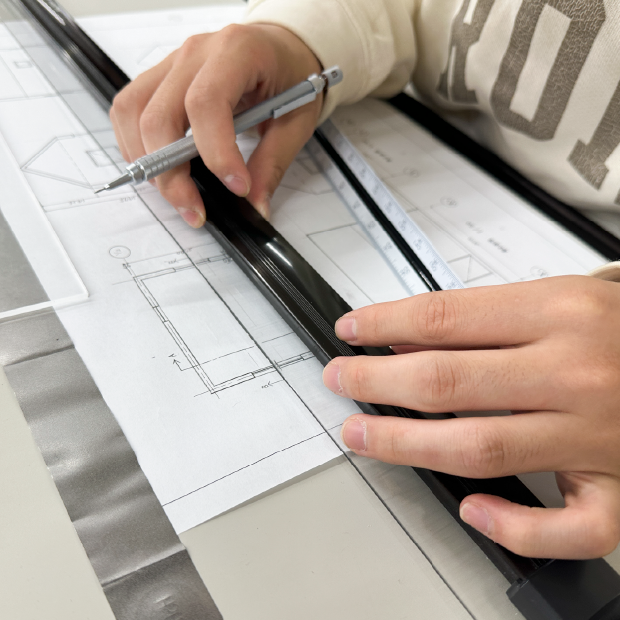
You love design and you love people. But that's exactly why some people can't decide on a future career. In your first year, you'll be introduced to the learning of each course, and in the second semester of your first year, you'll take pre-courses for each course. You'll gain a solid understanding of your field and your image of your future career, and after understanding your own aspirations, you'll be able to choose a specialized course and steadily move towards your future.
03
All courses allow students to obtain qualifications to take the architect exam
Obtaining a teaching license (science/industry), etc.
Each course has its own characteristics.
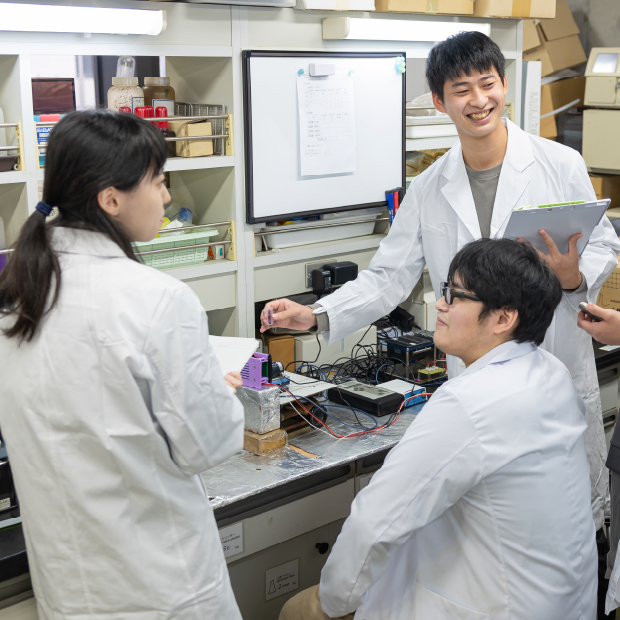
When thinking about the future, it is better to have more opportunities. Therefore, we have created a curriculum that allows you to obtain the qualification to take the architect exam regardless of which course you choose. Another feature is that you can aim for a qualification that makes use of the characteristics of each course. It is also possible to aim for a teaching license for science and industry, which is rare in this academic field.
As urbanization progresses, creating sustainable urban environments and preserving the landscape are important issues in modern society.
There is also a demand for architectural and environmental planning skills that can respond to disasters such as earthquakes.
To realize an even richer and safer way of life, creativity and ingenuity in the field of design is also essential.
In order to meet the wide-ranging and diverse social needs in the fields of architecture and environmental design, we provide comprehensive small-group education to train "designers" who can work at the forefront of the field.
After learning a broad range of fundamentals, students split into six courses from their second year onwards to pursue specialisation.
All courses aim to obtain first-class and second-class architect qualifications.
Students can also aim to obtain qualifications or teaching licenses that utilize their specialized skills depending on the course.
(Application for teacher training course accreditation is currently underway. However, the timing of the planned opening of the teacher training course may change depending on the results of the review by the Ministry of Education, Culture, Sports, Science and Technology.)
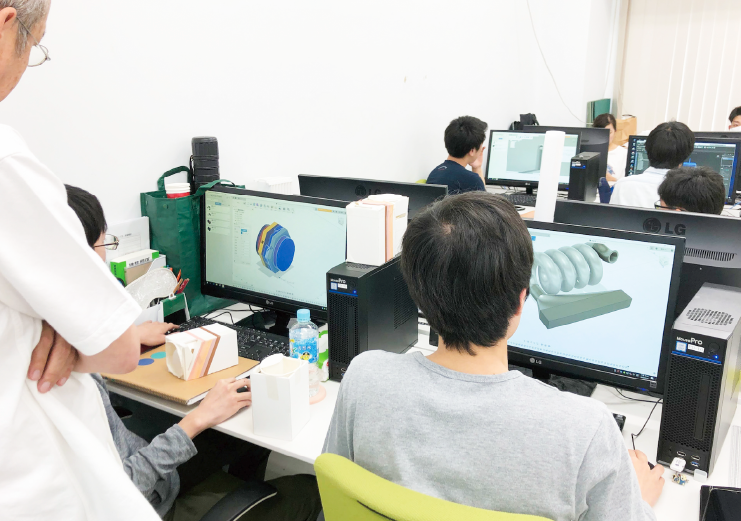
Mono Design Course
Students will learn about and create designs that enrich people's lives across time and place.
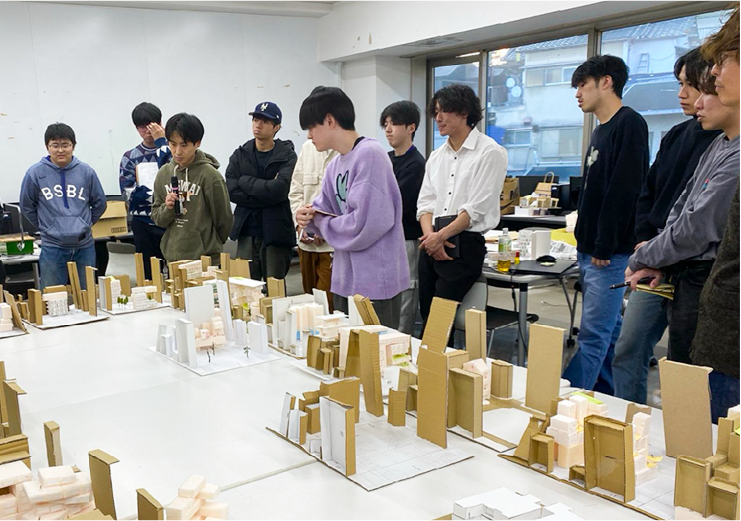
architectural design course
Learn how to design the relationship between people and space appropriate for the future and create rich and diverse spaces.
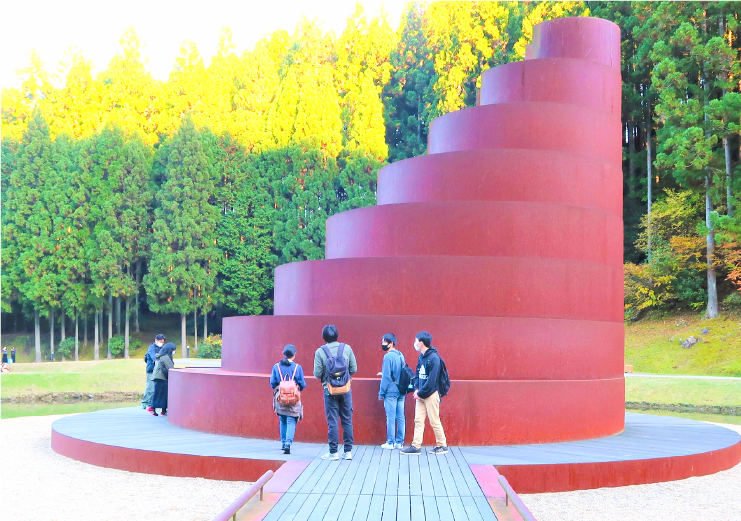
Environmental Design Course
Through practical exercises that will lead to the creation of a sustainable society, students aim to become designers and planners in a wide range of fields, from park and green space design to urban development, resource circulation policies, and city planning.
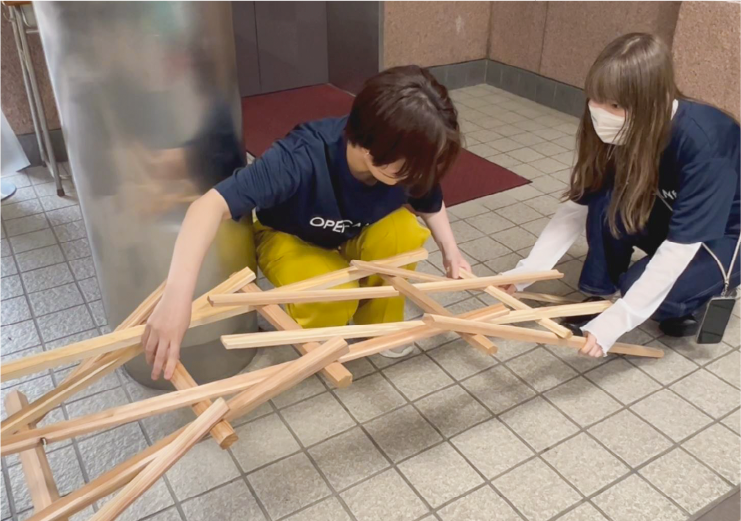
Spatial Design Course
Students will learn how to accumulate information on the environmental characteristics of a space, the structural performance of a building, and more, and use this information freely to learn creative design and engineering.
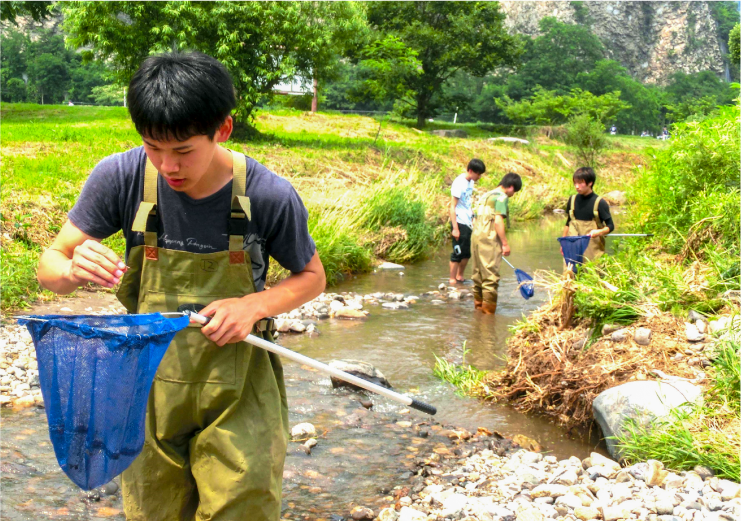
Nature Design Course
Through fieldwork and experiments, students will learn practical methods for protecting the rich natural environment and for the sustainable development of the city. This fascinating science-filled learning will also train science teachers.
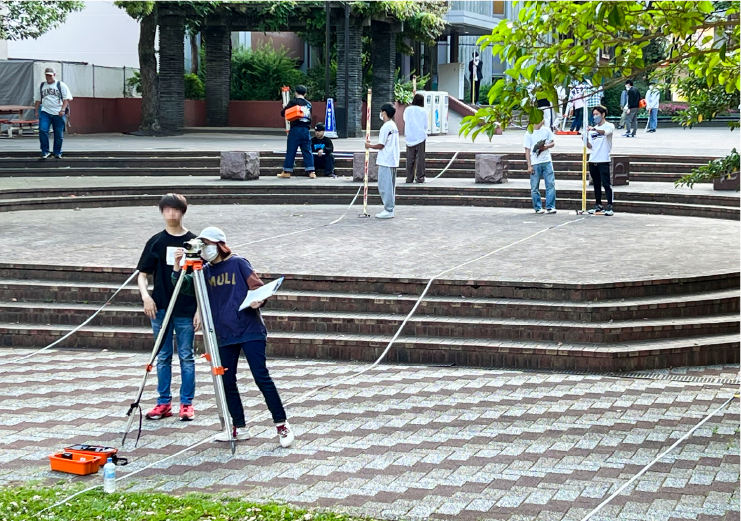
Urban Design Course
With the aim of creating safe, secure, and comfortable cities, students will learn urban design that makes full use of cutting-edge technologies such as digital technology.

Misaki Deguchi
In the future, I hope to obtain a first-class architect license.
I want to be involved in the construction of a large local hall!
Architecture, hydraulics, civil engineering, construction materials, natural energy, transportation, surveying, ICT... The range of subjects related to urban creation is so wide that you can be sure to find an area that interests you! The strict yet warm teachers are also very reliable. In the student council, I plan and manage various events, and I also act as a host at the open campus! Student life is very fulfilling.
In the seminar that starts in the third year, I would like to research the field of architecture. When I attended the Coming of Age Ceremony, my middle school teacher told me about the deterioration of the local hall, and a new goal was born. After graduation, I will get a job at a major construction company. As a first-class architect, I want to work on large-scale buildings such as music halls and coming-of-age ceremony venues! I want to create buildings that will be remembered by many people.
I like mathematics and music, and realized that if I was involved in the construction of a music hall, I could be involved in music through architecture, so I applied to a department related to architecture. My impression at the open campus and the opportunity to try to obtain an architect's license were the deciding factors for me to go to Osaka Sangyo University.

Mr. Yoshiaki Nishioka
While interacting with many people
I enjoy researching the environment every day!
Through field classes and online classes, we approach the environment from a wide range of perspectives. In the "field practice" class, which is a four-hour intensive program, we observed mountain plants and creatures and created a vegetation map, and conducted an environmental survey of the shopping district in front of the station to propose revitalization. It was fun to learn more about the environment through human interaction.
I joined the Environmental Sociology Seminar in my fourth year. I am working on environmental issues on an island where depopulation is progressing. I am conducting research by visiting the island, talking directly to the islanders, and experiencing the issues firsthand. In the future, I hope to use what I have learned at university to contribute to a better future, even if only a little, in relation to global environmental issues such as the SDGs.
I was interested in environmental issues such as global warming, and wanted to study the environment to become a valuable member of society. I decided to study the environment because I was attracted to the idea of learning about the environment from a variety of fields and perspectives.
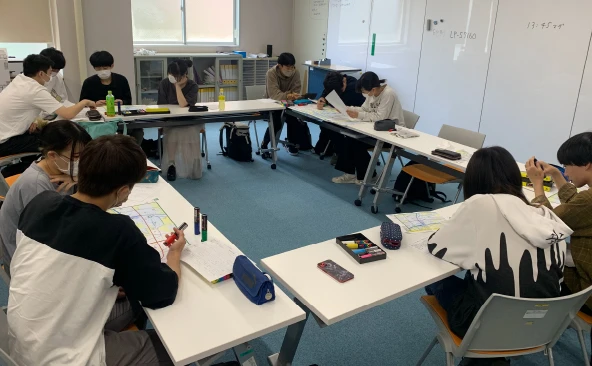
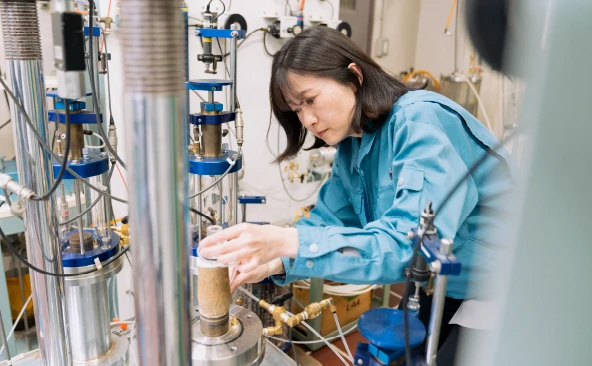
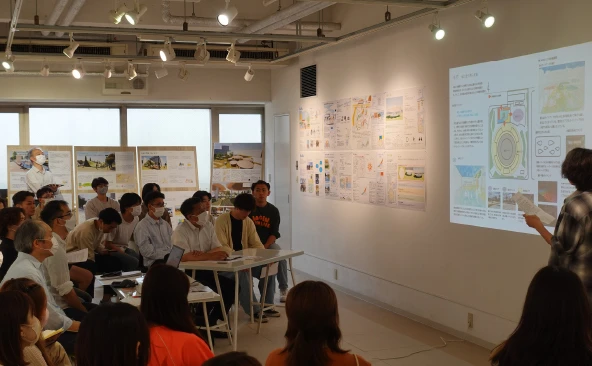
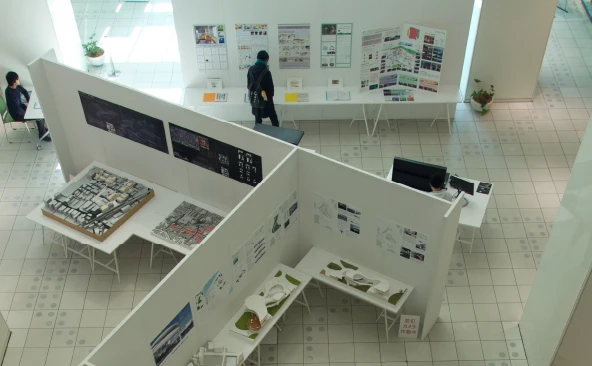
Private enterprises
ITEC Corporation/ Anabuki Construction Co., Ltd./ Arai Gumi/ Ichijo Construction Co., Ltd./ NTT Facilities Kansai Co., Ltd./ Obayashi Road Co., Ltd./ Kashima Road Co., Ltd./ Karimoku Furniture Co., Ltd./ Kansai Electric Power Co., Inc./ Kanden Engineering Co., Ltd./ Kintetsu Zoen Civil Engineering Co., Ltd./ Kinden Co., Ltd./ Kumagai Gumi Co., Ltd./ Clearwater Osaka Co., Ltd./ Keihan Electric Railroad Co., Ltd./ Koizumi Lighting Co., Ltd./ Konoike Gumi Co., Ltd./ JR West Japan General Building Services Co., Ltd./ Shimizu Corporation/ Showa Concrete Industry Co., Ltd./ SUEP./ Space Co., Ltd./ Sekisui House Ltd./ Sekisui House Real Estate Kansai Co., Ltd./ Semba Co., Ltd./ Daiei Kankyo Co., Ltd./ Daiwa House Industry Co., Ltd./ Takamatsu Construction Co., Ltd./ Takenaka Civil Engineering Co., Ltd./ Tama Home Co., Ltd./ Chuo Consultants Co., Ltd./ Tokyu Construction Co., Ltd./ Toshiba Plant Systems & Services Corp./ Tobishima Construction Co., Ltd./ West Nippon Expressway Co., Ltd./ West Japan Railway Company/ Nishihara Hygienic Industry Co., Ltd./ Nishimatsu Construction Co., Ltd. / Japan PS Co., Ltd. / NEXCO Maintenance Kansai Co., Ltd. / Panasonic Environmental Engineering Co., Ltd. / Hanshin Engei Co., Ltd. / Hanshin Construction Co., Ltd. / Hanshin Expressway Technology Co., Ltd. / Fukada Salvage Construction Co., Ltd. / Fudo Tetra Co., Ltd. / Funai Research Institute Co., Ltd. / Maeda Construction Co., Ltd. / Misawa Homes Co., Ltd. / Mitsui Home Co., Ltd. / Yamada SxL Co., Ltd. / Universal Engei Co., Ltd. / Wright Kogyo Co., Ltd. and others
public sector
Ministry of Land, Infrastructure, Transport and Tourism Kinki Regional Development Bureau / Ministry of Defense Maritime Self-Defense Force / Osaka Prefectural Office / Kyoto Prefectural Office / Nara Prefectural Office / Hyogo Prefectural Office / Amagasaki City Hall / Kizu City Hall / Koka City Hall / Nishinomiya City Hall / Higashiosaka City Hall / Amagasaki Municipal Amagasaki Sousei High School / Tokyo Metropolitan Government Junior and Senior High School Science Teachers / Nara Prefectural Nara Suzaku High School, etc.
Osaka Sangyo University Graduate School
Osaka Municipal University Osaka Sangyo University Graduate School / Osaka Sangyo University Osaka Sangyo University Graduate School / Osaka Osaka Sangyo University Graduate School / Osaka Prefecture Osaka Sangyo University Graduate School School / Kyoto Institute of Technology Osaka Sangyo University Graduate School / Kobe Osaka Sangyo University Graduate School / University of Hyogo Osaka Sangyo University Graduate School, etc.

National qualification
Qualifications that can be obtained at the same time as graduation
*1 You must earn the required subject credits in the teacher training course.
*5 Certification requirements and completion of required subject credits are required.
Qualifications that allow you to take the exam at the same time as graduation
*2 Specific subjects must be completed.
*3 After completing specific subjects, you can take the exam immediately after graduation. After that, you will gain practical experience and be able to register your license.
Qualifications you would like to aim for while attending school or after graduation
Public/private qualifications
Qualifications you would like to aim for while attending school or after graduation
*4 Practical experience is required after graduation.
Educational and research objectives
The Faculty of Architecture and Environmental Design trains practical designers who are creative, have a broad perspective, rich sensibilities, and solid technical skills in the specialized fields of design: urban infrastructure, living environments, people and nature, urban environments, architecture, interiors, crafts, and products, and who are able to create and maintain sustainable environments, spaces, and things that are beautiful, amenity, functional, and safe.
In addition, the school aims to train "well-rounded professionals" who can thrive in any field by utilizing the basic skills of designers (logical thinking, multifaceted design ability, problem-solving ability, rich sensibilities, communication skills, and information literacy including CAD, CG, AI, etc.).
Educational goals and three policies